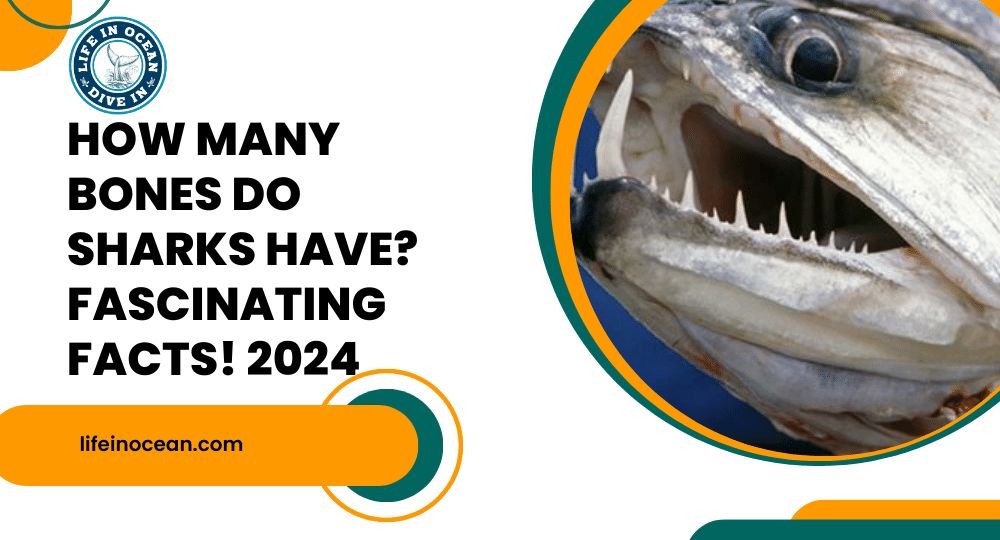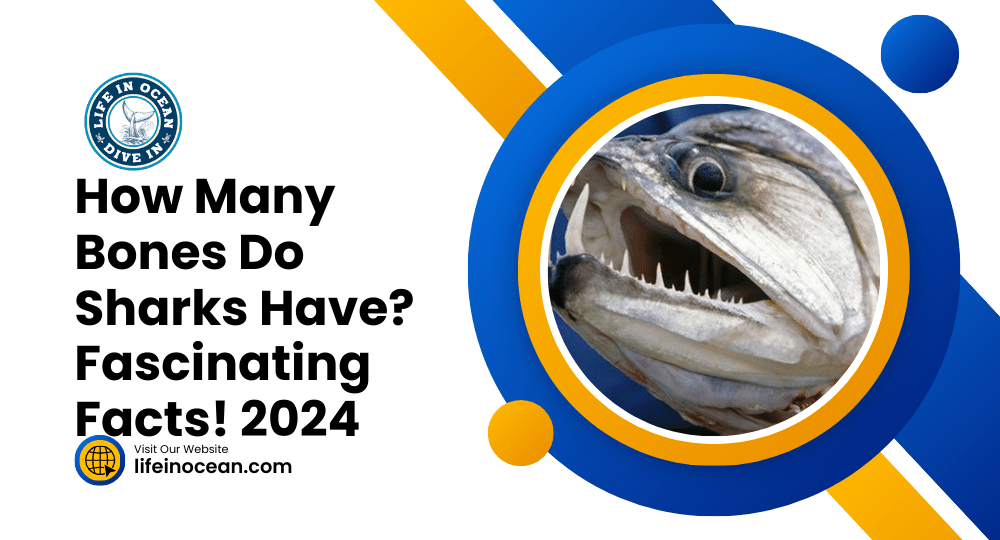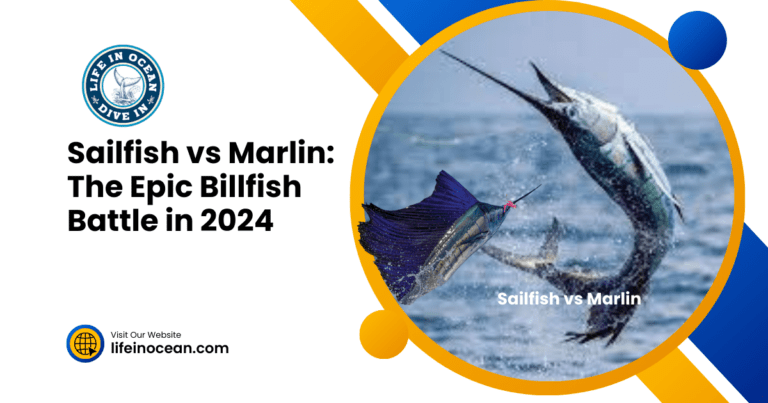Imagine diving into the deep blue sea, surrounded by the mysteries of marine life, including great white sharks, nurse sharks, and hammerhead sharks. As you explore bony fish, you can’t help but wonder: how many bones do sharks have in their fins and jaw, and what kind of scales do they have? Sharks are incredible fish species that have roamed our planet for millions of years, adapting and evolving to become apex predators with sharp teeth and powerful fins. The unique skeletal structure of hammerhead sharks and great white sharks plays a crucial role in their survival, hunting prowess, and the functionality of their fins. Additionally, the texture of shark skin is also important for their survival.
Unlike humans and other land-dwelling animals, sharks possess a cartilaginous skeleton instead of bones. Sharks also have teeth that are constantly replaced throughout their lives. This gives them several advantages in their underwater world. The absence of bones in shark skin provides flexibility, allowing them to navigate through water with ease while conserving energy. This lightweight structure grants them the strength needed to swiftly maneuver and capture prey.
Understanding the intricacies of shark skeletal structures sheds light on their remarkable adaptations for life in the ocean.
Table of Contents
How Many Bones Do Sharks Have?
Sharks are fascinating creatures that have captured the imagination of people for centuries. One intriguing aspect of sharks is their skeletal structure. Unlike humans and other vertebrates, sharks do not have bones in the traditional sense. Instead, their skeletons are primarily made up of cartilage.
No Bones About It
Cartilage is a flexible and lightweight tissue that provides support and structure to the shark’s body. It is interesting to note that sharks have a unique skeletal structure. They have cartilage instead of bones, which raises the question: how many bones do sharks have? It is softer than bone but still offers enough rigidity to maintain the shape of the shark’s various body parts. This unique skeletal composition allows sharks to be agile swimmers and navigate through water with ease.
A Cartilaginous Skeleton
The absence of bones in sharks has several advantages. Firstly, it makes them more buoyant, allowing them to stay afloat without expending too much energy. This buoyancy is crucial for their survival in water as it helps them conserve energy during long periods of swimming or hunting.
Secondly, a cartilaginous skeleton gives sharks greater flexibility compared to animals with bony skeletons. This flexibility enables them to twist and turn their bodies quickly, making them formidable predators in the ocean. Sharks can maneuver swiftly around obstacles or change direction rapidly when pursuing prey.
The Jaws and Vertebrae
While sharks may not have bones like humans, they do possess certain structures that resemble bone-like features. For instance, their jaws are composed of strong cartilage that acts similarly to our jawbones when biting into prey.
Sharks have cartilaginous vertebrae running along their backs instead of bony ones found in most vertebrates. These vertebrae provide support and protect the delicate spinal cord while allowing for flexibility during swimming movements.
The Skull Structure
The skull of a shark also showcases its unique skeletal makeup. Similar to other parts of its body, the shark’s skull consists mainly of cartilage rather than solid bone like humans. So, do sharks have bones? The answer is no. Sharks do not have bones. Instead, their bodies are made up of cartilage. Therefore, they do not have a specific number of bones like humans do. So, how many bones do sharks have? None. This cartilaginous skull allows the shark to have a lighter head, making it easier for them to move swiftly through the water.
The Advantages of Cartilage
The absence of bones in sharks presents several advantages. Firstly, their cartilaginous skeletons are more resistant to damage caused by collisions or attacks from other predators. The flexibility of cartilage allows it to absorb impact and reduce the risk of fractures or breaks.
Secondly, the lack of bones means that sharks do not need to constantly repair and replace damaged skeletal structures. This saves energy and resources for other essential functions such as hunting and reproduction.
Do Sharks Have Bones?
Sharks, those majestic creatures of the deep, have always fascinated us with their sleek bodies and powerful presence. But have you ever wondered about their skeletal structure? Well, here’s the scoop: sharks do not possess true bones in their bodies. Instead, their skeletons consist mainly of cartilage.
Cartilage is a softer and more flexible tissue compared to bone. It provides support and structure for the shark’s body while allowing them to maneuver swiftly through the water. Think of it like a bendy straw – it gives them that extra flexibility they need to navigate effortlessly.
Shark Skeletons: Cartilage vs. Bone
Unlike bony fish or other animals with skeletons made of calcium salts, sharks rely on cartilaginous skeletons. However, it is important to note that teeth are not bones. This unique feature sets them apart from most vertebrates. While shark bones may not be as sturdy as shark cartilage, they offer several advantages for these ocean predators.

One benefit of having a cartilaginous skeleton is weight reduction. Cartilage is lighter than bone, allowing sharks to be more buoyant in the water. This buoyancy makes it easier for them to swim and conserve energy during long journeys or hunting expeditions.
The Versatility of Shark Skin
Shark skin is cool because it’s not like our smooth skin. It has tiny scales called dermal denticles that make it feel rough like sandpaper. The roughness of shark skin helps them swim better by reducing drag in the water. It also protects them from parasites and injuries by making it hard for things to stick to their skin.
Evolutionary Advantage
Why do sharks have cartilage instead of bones? One theory says it helps them grow bigger and be more flexible. Cartilage is stronger against the pressure changes when sharks go deep underwater. Their flexible skeletons can handle the huge pressures that would break bones.
Are Shark Teeth Made of Bones?
Shark teeth are not bones, they’re made of a hard substance called dentin. Dentin is like the enamel in human teeth. It makes shark teeth strong and durable. Shark teeth keep growing and replacing themselves throughout their lives. This helps them always have sharp teeth for hunting. Different shark species have different tooth shapes depending on what they eat. Understanding shark teeth helps us appreciate how amazing these creatures are.
How Do Sharks Live Without Bones?
Sharks are fascinating creatures that have adapted to their marine environment in unique ways. One of the most intriguing aspects of sharks is the fact that they don’t have bones like other animals. Instead, their bodies are made up of cartilage, a flexible and lightweight material. This absence of bones provides several advantages for their survival.
Lighter and More Buoyant
Cartilage is lighter than bone, which allows sharks to be more buoyant in water. Imagine trying to swim with heavy bones weighing you down – it would be quite challenging! With their cartilaginous skeletons, sharks can effortlessly glide through the water without being weighed down by excessive weight. This buoyancy makes it easier for them to stay afloat and conserve energy while swimming.
Agile and Maneuverable
The flexible nature of cartilage also enables sharks to make quick turns and swim with agility. Unlike rigid bones, cartilage allows for greater flexibility and range of motion in their bodies. This flexibility is particularly advantageous when hunting prey or evading predators. Sharks can swiftly change directions or twist their bodies to catch fast-moving fish or escape danger.
Resilient and Durable
While cartilage may not be as strong as bone, sharks have bones that offer their own set of benefits for shark survival. Cartilaginous skeletons are more resistant to damage from impacts or collisions compared to brittle bones. The elasticity of cartilage helps absorb shocks and prevents fractures that could hinder a shark’s ability to hunt or defend itself.
Rapid Growth and Healing
Another advantage of having a cartilaginous skeleton is the ability for rapid growth and healing. Since cartilage is softer than bone, young sharks can grow quickly without the need for extensive mineral deposition seen in bone development. If a shark sustains an injury, its cartilaginous structure allows for faster healing compared to bone repair processes.
Do Sharks Have a Backbone?
Sharks may not have a traditional backbone like humans do, but that doesn’t mean they lack any support for their bodies. Instead of bones, sharks possess a spinal column known as the vertebral column, which plays a crucial role in their structure and movement.
The Vertebral Column: A Shark’s Backbone
The vertebral column in sharks is made up of numerous vertebrae. These vertebrae are not composed of bone but rather cartilage, giving them flexibility while still providing support to the shark’s body. This unique adaptation allows sharks to navigate through the water with agility and grace.
Cartilage vs. Bone
While most animals, including humans, have skeletons primarily made up of bones, sharks have evolved to rely on cartilage instead. However, it is important to note that teeth are not considered bones. Cartilage is a flexible and lightweight material that provides strength and durability without the added weight of bones. It allows sharks to move swiftly through the water without being hindered by heavy skeletal structures.
Support and Flexibility
The vertebral column in sharks serves multiple purposes. Firstly, it provides support for the muscles surrounding it, allowing the shark to swim efficiently and maintain its shape underwater. Secondly, it offers flexibility that enables the shark to twist and turn quickly when hunting prey or evading predators.
Adaptations for Survival
Sharks’ reliance on cartilaginous skeletons has allowed them to adapt successfully to their marine environments over millions of years. The absence of heavy bones reduces their overall weight, making it easier for them to remain buoyant in water. Cartilage is more resistant to damage from constant movement and potential injuries caused by collisions or attacks from other animals.
Other Functions of the Vertebral Column
Apart from providing structural support and flexibility, the vertebral column also houses another vital component: the spinal cord. The spinal cord is responsible for transmitting signals between the brain and different parts of the shark’s body, controlling its movements and sensory functions.
Why Do Sharks Have a Cartilage Skeleton?

Energy Conservation and Swimming Efficiency
Sharks have a special kind of skeleton made of cartilage instead of bones. This helps them swim easily because it’s lighter, so they don’t have to use as much energy. They can move quickly and smoothly in the water because there’s less drag.
Shock Absorption and Flexibility
Sharks have a special kind of skeleton that helps them move fast and protect themselves. This shark skeleton is made of cartilage, which is flexible and can absorb shocks. It is interesting to note that shark bones, including those in the skull, are made of cartilage. Many people wonder how many bones are in a shark’s skull. It’s like wearing a suit made of rubber bands – you can move quickly without feeling any jolts or discomfort because the rubber bands stretch and absorb the shocks. Sharks can do the same thing with their flexible cartilage skeletons!
Regenerative Abilities
Sharks can heal faster than other animals because their cartilage can regenerate quickly. This helps them recover from injuries and keep hunting in their dangerous ocean homes.
Are Sharks Vertebrates?
Sharks are classified as vertebrates, even though they don’t have bones like other animals. Vertebrates are animals with a backbone or spinal column. Sharks have a cartilaginous skeleton, but they still have the important feature of being vertebrates. They belong to the same group as mammals, birds, reptiles, and amphibians. How do sharks fit into this category without traditional bones? Let’s explore their unique anatomy.
Cartilaginous Vertebrae: The Backbone of Sharks
Sharks don’t have bones like us, they have something called cartilaginous vertebrae. Cartilage is a flexible and strong tissue that helps with structure and support in the body. It’s the same stuff in your nose and ears! In sharks, this cartilage makes rings or segments called vertebrae along their back. These vertebrae let them move and swim smoothly in the water. It’s like having a bungee cord instead of a stiff pole—sharks can twist and turn easily!
The Advantages of Having Cartilage
While it may seem unusual for an animal to lack traditional bones, there are some advantages to having a cartilaginous skeleton:
- Lightweight: Cartilage is lighter than bone, allowing sharks to be more buoyant in water.
- Flexible: The flexibility provided by cartilage allows sharks to navigate tight spaces and make quick turns.
- Durable: Despite being softer than bone, cartilage is incredibly strong and resistant to damage.
These advantages make cartilage an ideal adaptation for life underwater where maneuverability and speed are crucial.
Different Types of Sharks, Same Skeleton
Not all sharks have the same skeleton. Some have different shapes and abilities. For example, hammerhead sharks have a unique head shape with good eyesight. Great white sharks have strong jaws with sharp teeth. Nurse sharks can rest on the ocean floor using their fins. But even though they look and act differently, all sharks are still vertebrates with a backbone made of cartilage.
Conclusion
So, there you have it – the fascinating world of shark skeletons! As we’ve discovered throughout this blog post, sharks are unique creatures with a skeletal structure that differs from most other animals. Instead of bones, they possess a skeleton made primarily of cartilage. This flexible and lightweight framework allows them to navigate their marine habitats with ease and agility.
But don’t let their lack of bones fool you – sharks are still incredible predators. Their cartilage skeleton provides numerous advantages, such as faster swimming speeds and improved maneuverability. It’s like having a built-in suit of armor that allows them to swiftly glide through the water, hunting down their prey with precision.
Now that you know more about how sharks’ skeletons work, why not share this newfound knowledge with your friends? Spread awareness about these magnificent creatures and debunk any myths or misconceptions you come across. By understanding the unique adaptations that make sharks so successful in their environment, we can foster a greater appreciation for these apex predators and help protect their delicate ecosystems.

So go ahead – dive deeper into the world of sharks and continue exploring the wonders of our oceans. You never know what discoveries await you beneath the surface!
FAQs
How many bones do sharks have?
Sharks are cool because they don’t have bones like us. Instead, they have something called cartilage, which is like what’s in our noses and ears. This makes them great swimmers and helps them survive. So, sharks have no bones but they’re still strong. If you want to know more about sharks, check out our guide on their anatomy and behavior. Learn about their awesome adaptations!
Do sharks ever get bone diseases?
Sharks don’t have bones like humans, so they don’t get bone diseases. But they can still have health problems because of their cartilage. They might get infections or tumors that can make it hard for them to swim, find food, or have babies. Even though they don’t get bone diseases, it’s important for scientists and people who care about sharks to keep an eye on their health. If we understand the problems they face, we can help keep them safe and protect where they live.
Are shark skeletons stronger than human skeletons?
Shark skeletons are different from human skeletons. Sharks have cartilage instead of bones, which makes them flexible and helps them swim easily. It’s like they have a wetsuit built into their bodies. On the other hand, human skeletons are made of bones that give us support and let us stand up straight. Our skeletons, including the skull, protect our organs and produce blood cells. Do you know how many bones are in the skull? So, even though shark skeletons aren’t as strong as human ones, they work well for sharks in the water.
Can sharks break their cartilage?
Sharks have strong cartilage that doesn’t break easily. It helps them stay safe while hunting or fighting. But, like all living things, their cartilage can get worn out. Too much stress can make it weaker. Sharks don’t often break their cartilage, but it’s important to keep their environment clean and safe. This means not polluting or overfishing. It helps keep them healthy.







